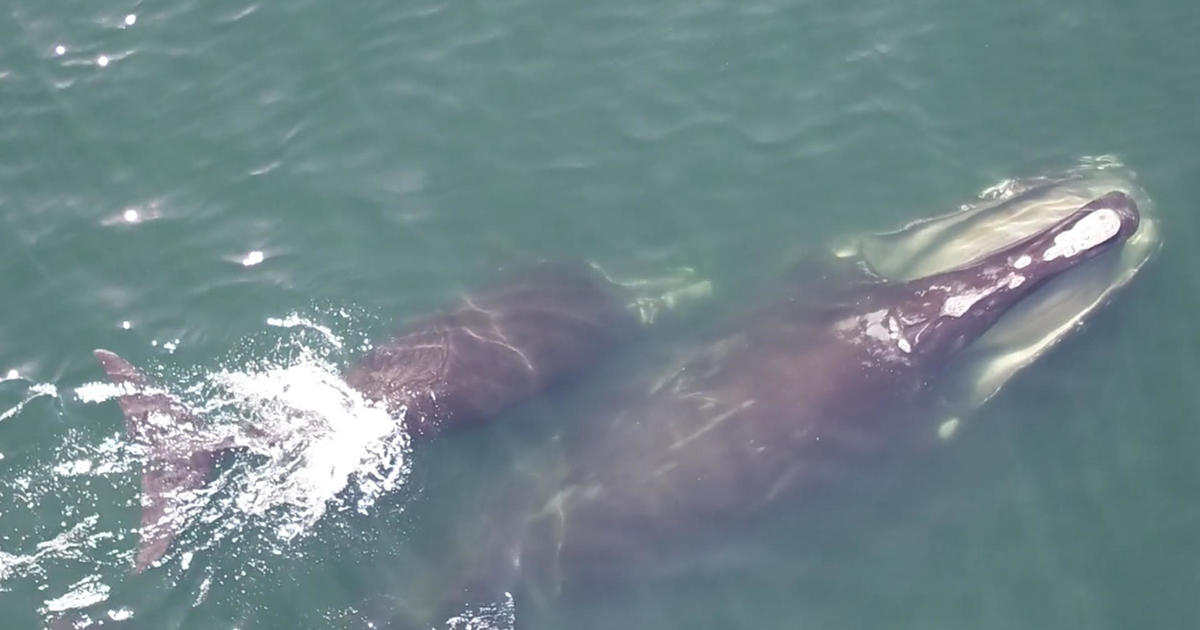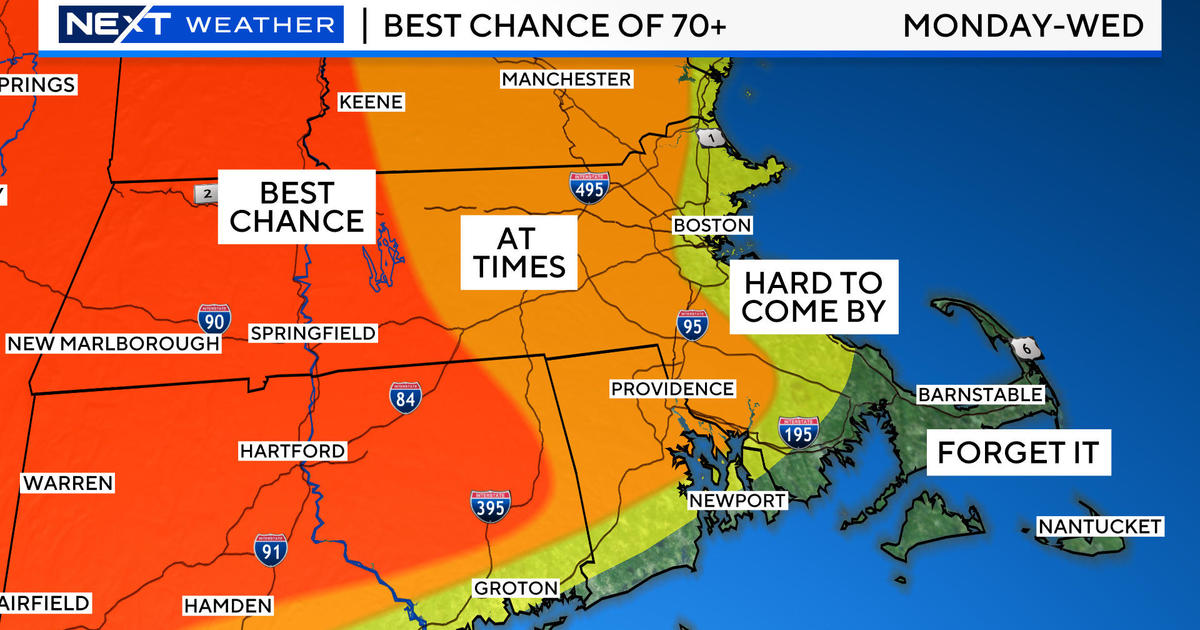Woods Hole Researchers Using Robots To Detect Rare Whales
BOSTON (AP) — The Outer Fall area in the central Gulf of Maine is believed to be a mating ground for the endangered North Atlantic right whale, but it's not always hospitable to humans. On a recent trip, endless, steep swells jostled the research boat Endeavor, while gusts transformed the steady sleet into eye-stinging projectiles.
The miserable conditions, though, were exactly what whale-detecting robots being tested on the voyage were built to beat.
The torpedo-shaped underwater robots, called gliders, can read calls from four types of endangered whales and relay their locations in real time. And they can do it in weather too harsh for the plane and boat surveys now relied on to find the whales.
On a three-week trip between November and early December, the gliders developed by the Woods Hole Oceanographic Institution located nine right whales. The robots also led the Endeavor into an area where researchers were able to observe the whales firsthand, once the waters calmed.
"The system worked, quite frankly, beyond my expectations," said WHOI scientist Mark Baumgartner, a project co-leader.
The gliders are primarily about protecting whales, since knowing where the often-hard-to-find whales are can help regulators devise rules that prevent often fatal human contract, such as ship strikes.
The robots are about six feet long with short wings. They aren't new, but their ability to almost instantly recognize the whales is.
In 2005, they were deployed in the Gulf of Maine carrying recorders scientists needed to retrieve and listen to before they could figure out what whales the glider had found. Seven years and about $1 million later, the gliders boast a processor that so far recognizes a total of 15 of the distinctive calls made by four types of endangered baleen whales: right, fin, humpback and sei.
A second after hearing the call, the glider identifies the whale it thinks it heard and surfaces every two hours to transmit the data via satellite, Baumgartner said.
Scientists can react to the data and direct the gliders, which are GPS-equipped, to a wide range of locations during the five weeks it can stay at sea. That mobility is an advantage over an existing system which uses stationary underwater microphones placed on buoys near a shipping lane into Boston to listen for right whales.
The gliders also measure various environmental conditions like temperature and salinity that can offer clues why whales are in certain places at certain times. For instance, high concentrations of algae — which draw the tiny crustaceans that baleen whales eat — can indicate whales go there to feed.
But their indifference to bad weather is perhaps the gliders most critical feature.
"We know we're not seeing where all the whales are, and flying is expensive and dangerous. The gliders offer this fantastic opportunity to find another way of locating whales," said Peter Corkeron, leader of the large whale team at the National Oceanic and Atmospheric Administration's Northeast office, which will use data collected from the gliders.
The gliders can't replace planes and boats because they can't replace human observation. The right whales, for instance, are tracked individually, and that's impossible without a person to identify the animals by distinctive, hardened patches of skin on their nose and jaw.
Such extensive efforts to find and learn about the animals reflect just how rare they've become, particularly the North Atlantic right whale. The animal has a population of around 550, and no one wants to push it to extinction.
One of its primary protections regionally is mandatory, seasonal speed restrictions for vessels traveling in three areas off the coast of New England. But those restrictions, enacted in 2008, expire in 2013, and there's pressure now to determine if the rules have worked and should remain in place, said Mike Asaro, a marine mammal policy specialist at NOAA.
The gliders can augment efforts to protect the whales while ensuring shipping companies aren't slowing down — and losing money — for nothing, he said.
"The more information we get on where right whales are, and the better able we are to predict where they are going to be, we can put those speed restrictions in the best possible spot," he said.
The gliders need more time to prove their reliability, Asaro said. But he and Corkeron agree it's had a strong start.
"You've got something that can move around the place and locate whales," Corkeron said. "It's huge step forward."
Copyright 2013 The Associated Press.



